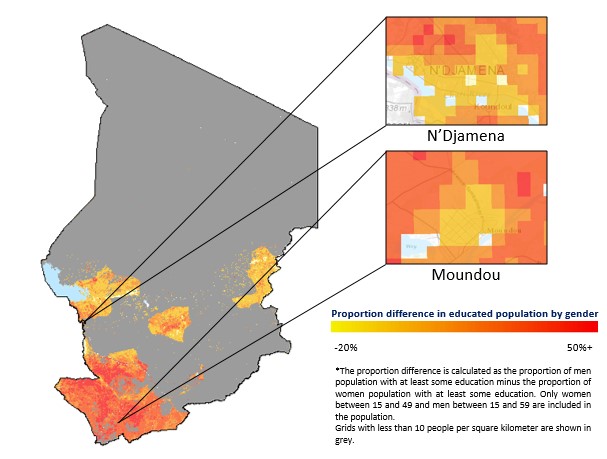Build Effective Social and Behavior Change Strategies


Access to education empowers women: the question is, how do we deploy resources to the communities with the biggest gaps between women’s and men’s education?
In honor of International Education Day, we took a close look at Chad, where literacy rates and education attainment are much lower among women than men. In general, education rates increased in Chad from 2004 to 2014, however women’s education remained persistently lower over time. In 2014, 21% more women than men received no education–only slightly lower than the 24% education gender gap in 2004.
Even among the educated, men get more education than their female counterparts. In 2014, educated men on average received 1.1 more years of education than women, a gap similar to the one in 2004 [2].
When we measure inequality as the gap in proportion of educated population between men and women, education inequality is more severe in southern Chad, where the share of educated men is often 30 percentage-points higher than the share of educated women. Education inequality also varies within cities. In N’Djamena, inequality is lower in the south than the north, while in Moundou, the gender gap is relatively low around the city center but gets bigger towards the suburb areas.
With better insight on where women’s education lags the most, governments and development actors can deploy resources more efficiently and with greater impact.

[1] Complete primary includes people that did not finish secondary education.
[2] Men are those between 15 and 59, and women are those between 15 and 49.
[3] The population only includes women between 15 and 49 and men between 15 and 59. Educated population refers to people with at least some education, including incomplete primary education through higher education.